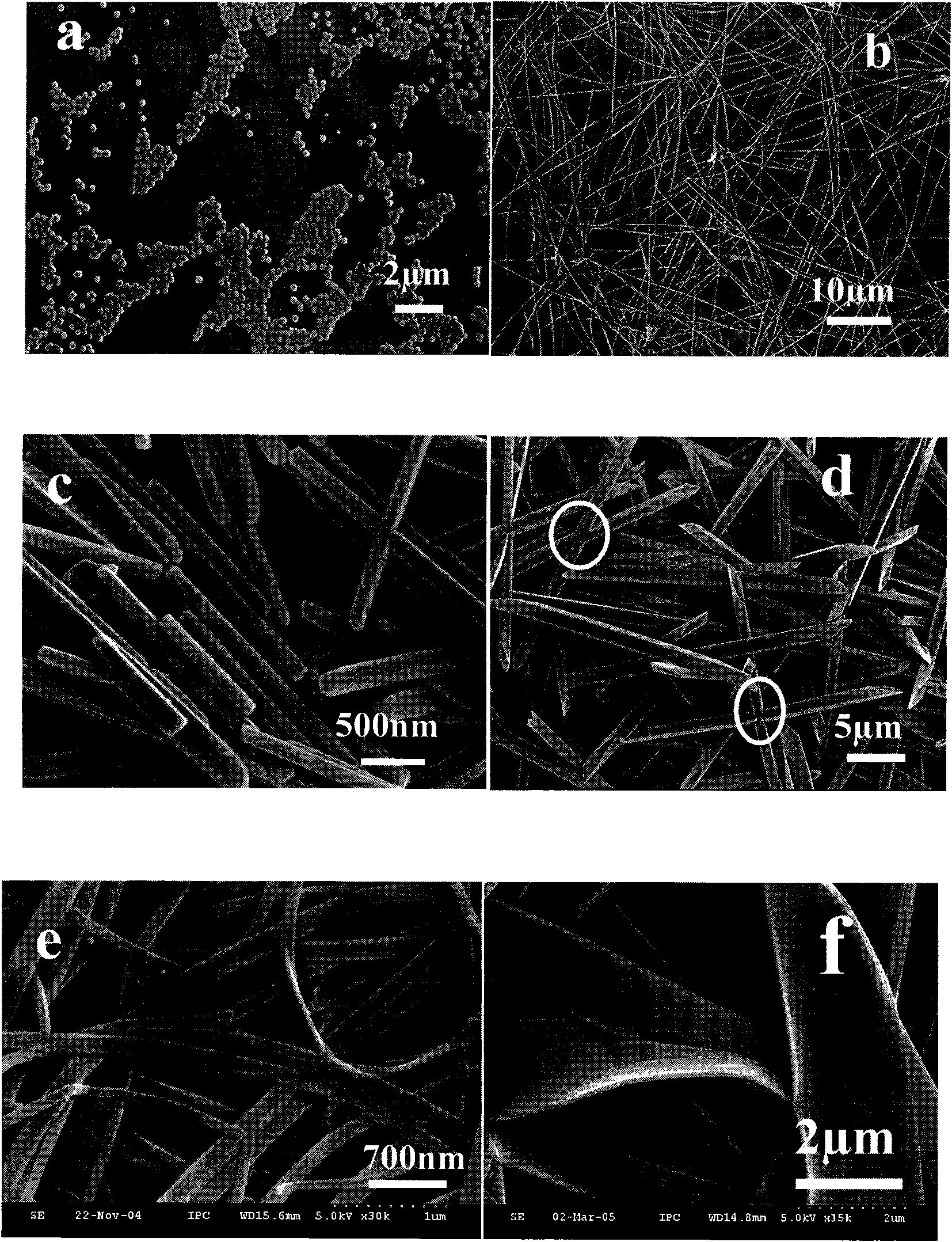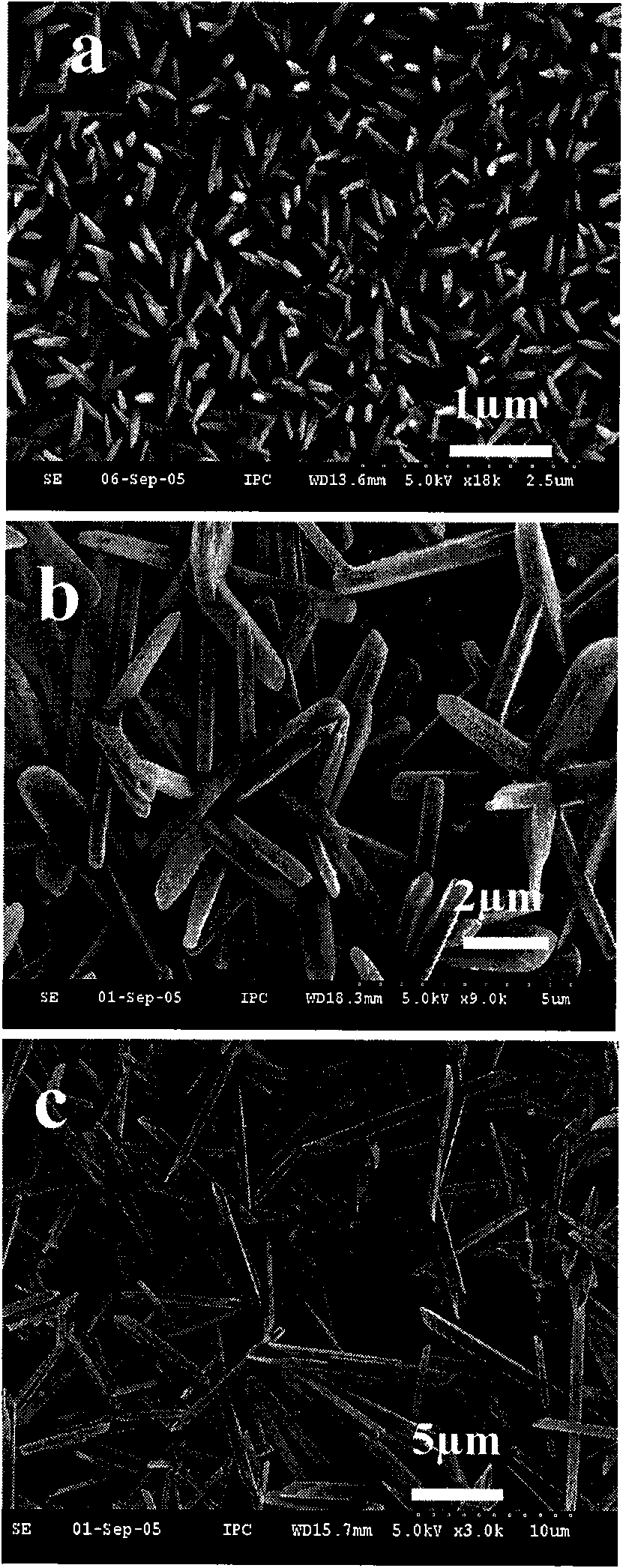Method for preparing monocrystalline one-dimensional or quasi one-dimensional organic nanomaterial by solution method
A technology of organic nanomaterials and single crystals, applied in the directions of polycrystalline material growth, single crystal growth, single crystal growth, etc., can solve the problems of cumbersome, limited output, and final product damage, and achieve simple preparation process, low cost, single Good dispersion effect
- Summary
- Abstract
- Description
- Claims
- Application Information
AI Technical Summary
Problems solved by technology
Method used
Image
Examples
Embodiment 1
[0039] The structural formula of the organic compound used in the present embodiment is as follows:
[0040]
[0041] (1) In a round bottom flask, dissolve the target organic compound in tetrahydrofuran (THF) to a concentration of 1×10 -3 M solution;
[0042] (2) Use a micro-syringe to draw 100 μL of the solution obtained in step (1), drop it dropwise into 5 mL of vigorously stirred secondary pure water, and stir it electromagnetically for about 3 minutes at room temperature, so that the organic molecules are dissolved under the water-repelling force. Nucleation;
[0043] (3) The product obtained in step (2) is left at room temperature to be stable, and the supramolecular interaction force between molecules is used as the driving force to guide the growth of crystal nuclei. After a certain precipitation time, it can be deposited at the bottom of the container. Particles of organic nanomaterials, the scanning electron micrographs of which are shown in figure 1 as shown in...
Embodiment 2
[0045]According to the method of Example 1, the organic nanomaterials of intramolecular charge transfer compounds are prepared, the difference is that the structural formula of the organic matter used in this example is as follows, and the scanning electron micrograph of the obtained organic nanowires is as follows figure 1 as shown in b.
[0046]
Embodiment 3
[0048] According to the method of Example 1, the organic nanomaterials of intramolecular charge transfer compounds are prepared, the difference is that the structural formula of the organic matter used in this example is as follows, and the scanning electron micrograph of the obtained organic nanorods is as follows figure 1 as shown in c.
PUM
| Property | Measurement | Unit |
|---|---|---|
| length | aaaaa | aaaaa |
| length | aaaaa | aaaaa |
Abstract
Description
Claims
Application Information
 Login to View More
Login to View More - R&D
- Intellectual Property
- Life Sciences
- Materials
- Tech Scout
- Unparalleled Data Quality
- Higher Quality Content
- 60% Fewer Hallucinations
Browse by: Latest US Patents, China's latest patents, Technical Efficacy Thesaurus, Application Domain, Technology Topic, Popular Technical Reports.
© 2025 PatSnap. All rights reserved.Legal|Privacy policy|Modern Slavery Act Transparency Statement|Sitemap|About US| Contact US: help@patsnap.com



